Note: This article contains an affiliate link to Apple. If you click through and make a purchase, we earn a small commission at no extra cost to you.
For just a few short years, Milparinka was a busy town. Like so many gold rushes around the world, the Albert Goldfields promised far more than they could deliver.
In 1882, the Wilcannia Times optimistically proclaimed, “…the Albert will yet be proved to be one of the richest goldfields in the colony”.
It was not to be.
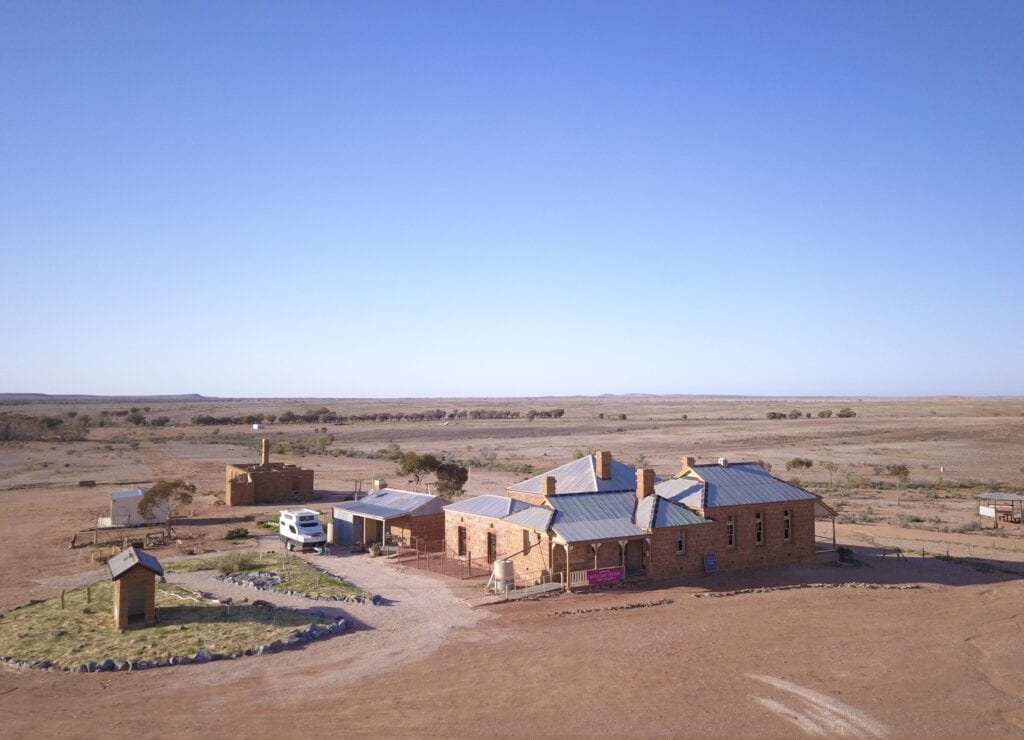
Extreme lack of water plus poor yields meant the Albert Goldfields were destined for a short life. Despite this, Milparinka lives on. In fact, it’s experiencing a revival.
We’ll get to this soon. First though, where is Milparinka?
Getting There
Milparinka is about 300km north of Broken Hill and 42km south of Tibooburra in far western New South Wales, just off the Silver City Highway.
This road is now sealed all the way from Broken Hill to Tibooburra… and in fact, past Tibooburra to the Queensland border at Warri Gate.
So you can visit Milparinka in a conventional car, motorhome, on-road caravan and even an on-road motorbike!
An alternative route is the Cut Line from Bourke. This fantastic outback journey passes through Wanaaring and ends (or begins) at Tibooburra.
Another excellent outback road trip is the “alternative route” from Broken Hill via Silverton and the dingo fence. It’s a rare chance to see the Barrier Ranges from the western side, drive alongside the dingo fence and travel through a wide variety of brilliant desert/arid country scenery. This trip is not suitable for conventional cars and is quite remote.
Accommodation, Services and Facilities
Accommodation
You can stay at the pub (the Albert Hotel), which is open all year round. Or stay in the Heritage Precinct campground. There are powered sites if you need mains power.
When I say “sites”, it’s all pretty informal at Milparinka. As long as you park near the power outlet (and pay for it, of course!), you’ll be fine.
Or if you don’t need power, then pick a spot wherever you like within the campground.
You can also camp down on the waterhole, but please ask first at the Heritage Visitor Centre.
The campground has new amenities, self-contained shower/toilet combos plus a separate room with washing machine and clothes dryer. I can personally vouch for the showers… they’re brilliant!
They’ve also recently added a camp kitchen and a couple of undercover seating areas. There’s always something being added to this rapidly growing destination. It’s difficult to keep up with the changes!
Food and Fuel
There are no services (including no fuel) at Milparinka. The nearest shops are at Tibooburra. Both TJ’s Roadhouse and the Corner Country Store stock basic groceries, sell fuel (petrol and diesel) and carry some basic hardware goods.
However, you can get coffee, lunch and dinner at the Albert Hotel at Milparinka. It’s a typical country pub, they serve a decent feed!
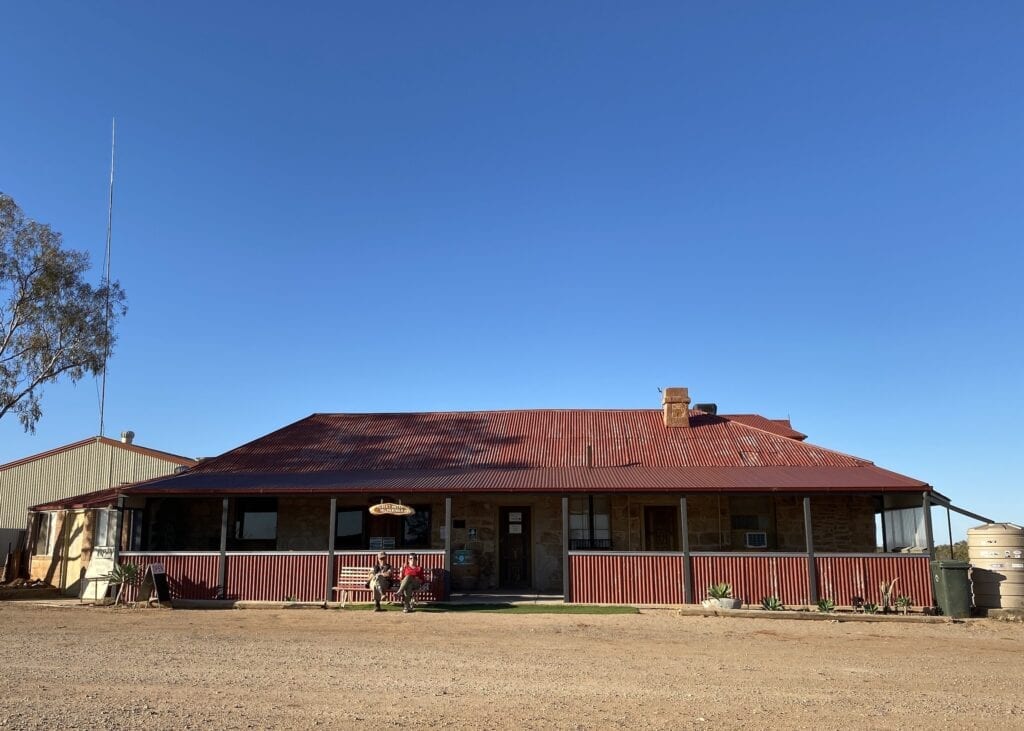
Mobile Reception
Mobile reception is Telstra only… when it works. It’s an unreliable 3G “service” and patchy at best, especially when a few campers roll in.
You can send and receive phone calls most of the time, but even basics like checking emails can be excruciatingly slow. There’s still a Telstra phone booth outside the pub, which you can also use.
Now, let’s look back on Milparinka’s short but curious gold mining history.
A Glimmer of Hope
In 1880, a small amount of gold was discovered at Mount Poole, about 20km north-west of the current Milparinka township.
Just 35 years earlier, Charles Sturt’s inland exploration party had been stranded for 6 months at nearby Preservation Creek, in the typical severe heat of a Corner Country summer.
Sturt named their temporary home Depot Glen.
They were stranded due to a lack of water. Depot Glen held the only remaining water they could find in any direction.
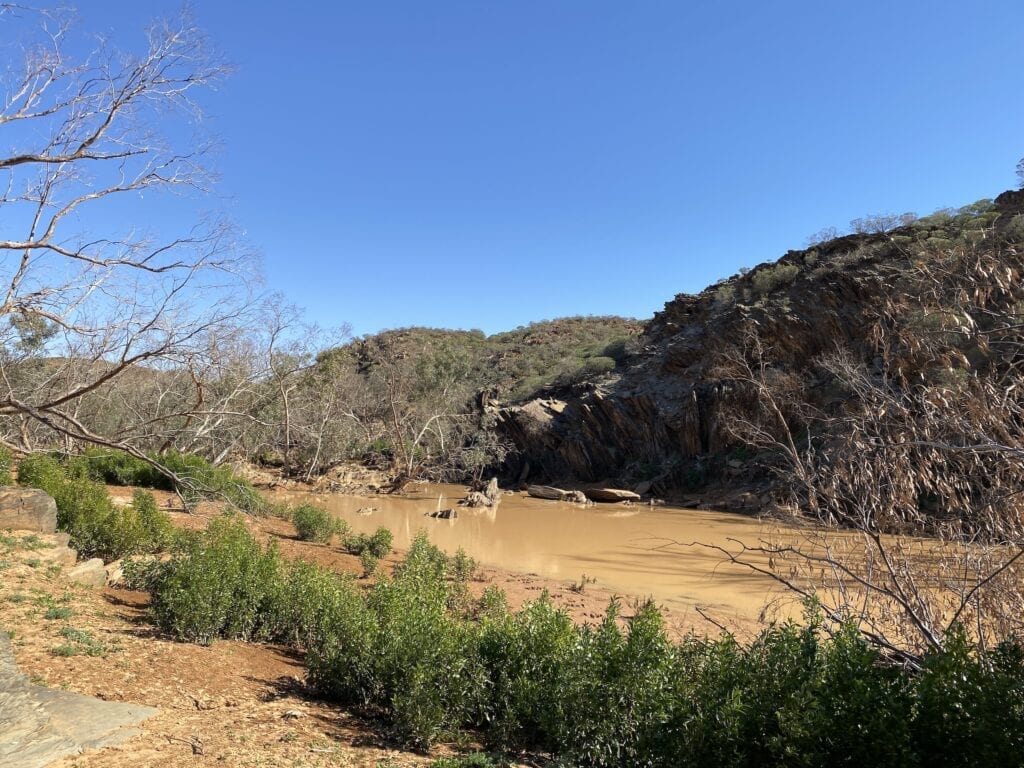
Perhaps the miners who rushed to Albert Goldfields should have taken this as a warning…
Once word spread about the gold find, over 2,000 miners flocked to the region. They discovered small amounts of gold between Mount Browne and Tibooburra (see map). It became known as the Albert Goldfields and four towns sprang up… Milparinka, Tibooburra, Mount Browne, and Albert.
Milparinka grew beside Evelyn Creek waterhole. This waterhole has long since disappeared. But at the time, it was host to a tent city.
Hundreds of miners surrounded the only large waterhole in the area, the same one Sturt used on his way through… and the same one the Wangkumara people had used long before white man entered their world.
The word Milparinka is thought to mean “water may be found here” in Wangkumara language.
The Harsh Reality
The miners faced two harsh realities. One, there wasn’t much gold here… at least, not enough to make a living from. And two, there was no water.
Less than 2 years after the initial rush, just 400 people remained on the goldfields.
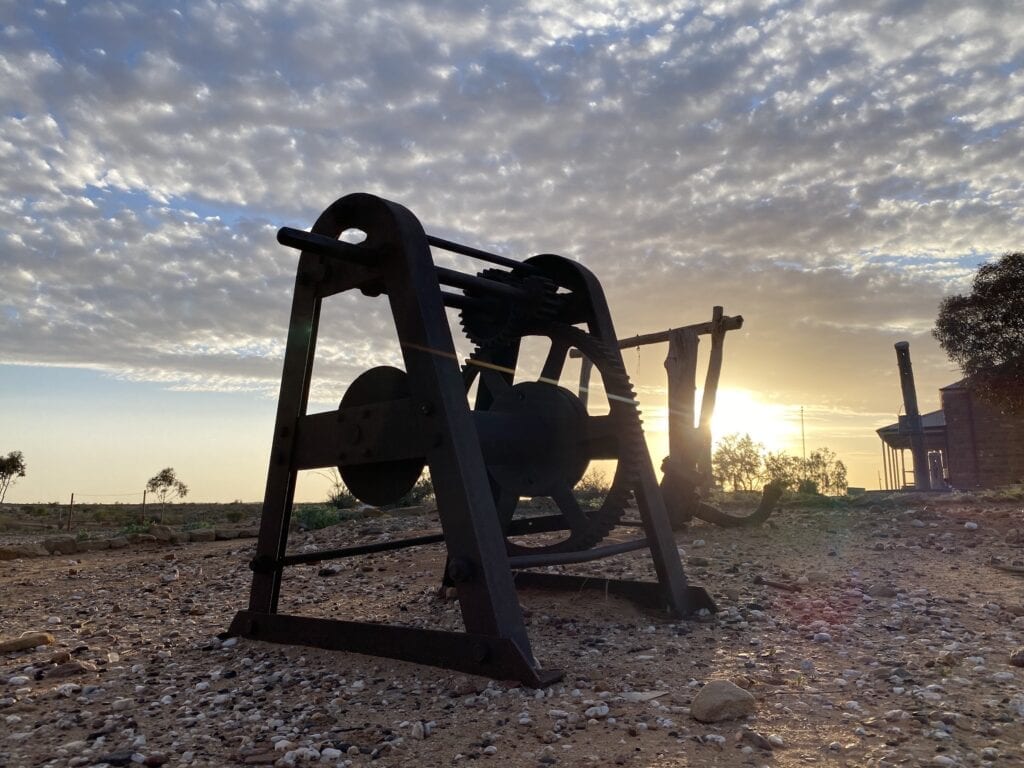
The population continued to shrink, with just a few hardy (or desperate) souls staying on to battle the severe lack of water and brutally hot summers. The Albert Goldfields were abandoned by the turn of the century.
It’s difficult to over-state how difficult life was for the miners. They lived along the creeks, congregating around waterholes. With no sanitation, disease was rife.
When the unreliable rains failed to arrive or the fierce summer hit, most of these waterholes simply disappeared. Miners had to move on or perish.
They were often desperate for drinking water, let alone the water they needed for gold mining.
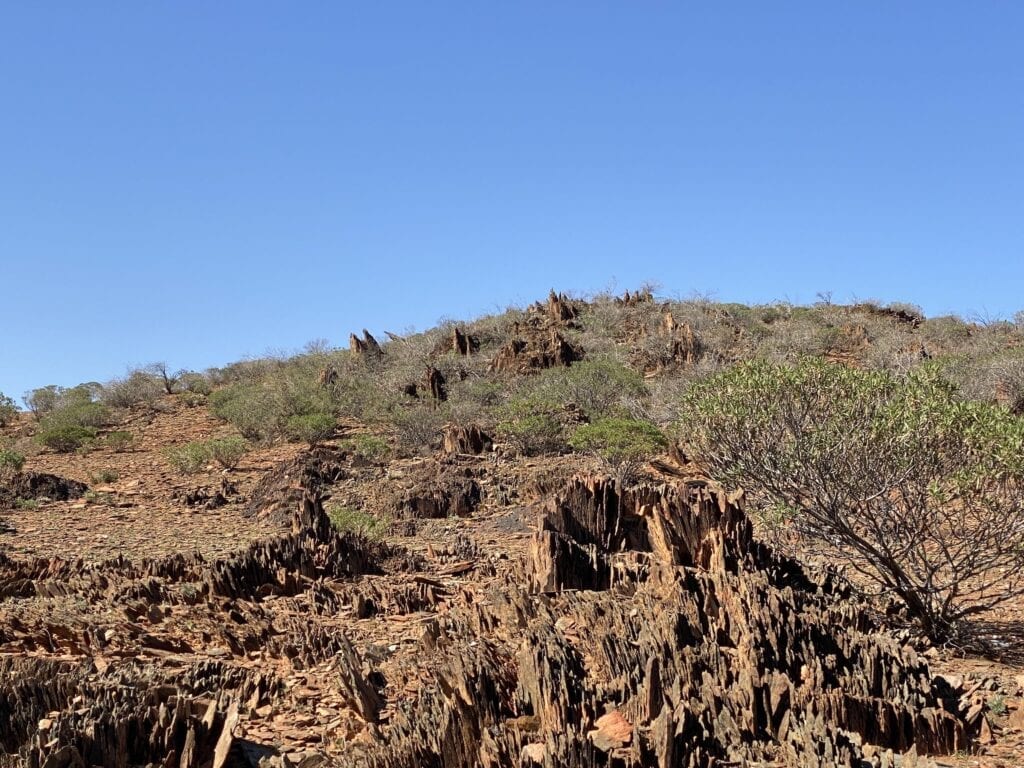
What’s not documented is the devastating effect this would have had on Aboriginal people. We know they lived here… Sturt encountered Indigenous people along Evelyn Creek and at Depot Glen.
These people had thousands of years of knowledge about which waterholes they could rely on, which waterholes dried up first, how far to the next waterhole and so on.
Pastoralists moved into the area in the 1870s. Their stock had a huge impact on the ephemeral waterholes, upsetting the vital chain of water supplies along the creeks.
And miners were the final nail in the coffin.
Waterholes were sucked dry, fouled up or contaminated by mining. And the miners spread diseases caused by their own lack of sanitation.
The Wangkumara people didn’t stand a chance.
A Smarter Way to Make A Living
A few people fared better than most. A canny man named George Blore understood where the real money was… not in mining, but in servicing the transport route with hotels.
George and various family members built four hotels, all of them on the route from Wilcannia up to Tibooburra. One of these was the Albert Hotel at Milparinka. The others are long gone, but somehow the Albert Hotel has survived. It’s also known as the Milparinka pub.
The Blore name lives on in Corner Country, with descendants of George settling in the area and becoming a well-known family in the community to this day.
Keeping the Pub Running
The pub is full of character. Over the years, it’s had a few weird and wonderful additions. But the original sandstone building still forms the core of the pub.
Apparently, the sandstone was only recently re-discovered when someone accidentally chipped render off the front wall. The render has since been removed to reveal the magnificent original sandstone walls.
As you walk inside, you can’t help but notice the thick sandstone walls and how much cooler it is inside.
Bec owns the Albert Hotel, providing accommodation, cold beer, excellent coffee, and a typical hearty country pub dinner.
During our stay at Milparinka, Bec had a couple from Victoria helping her out. Ester and Kurt are regulars every year, coming back to help at every opportunity.
They were great company… warm, friendly and a lot of fun!
A Planned Town
Milparinka was actually proclaimed a town in 1880. By 1881, a map of the proposed town showed the proposed layout. It even allowed for future expansion.
The town never filled, but it did have all the essential services of the time… blacksmith, store, pubs, newsagent, tailor, bank, pharmacy and so on.
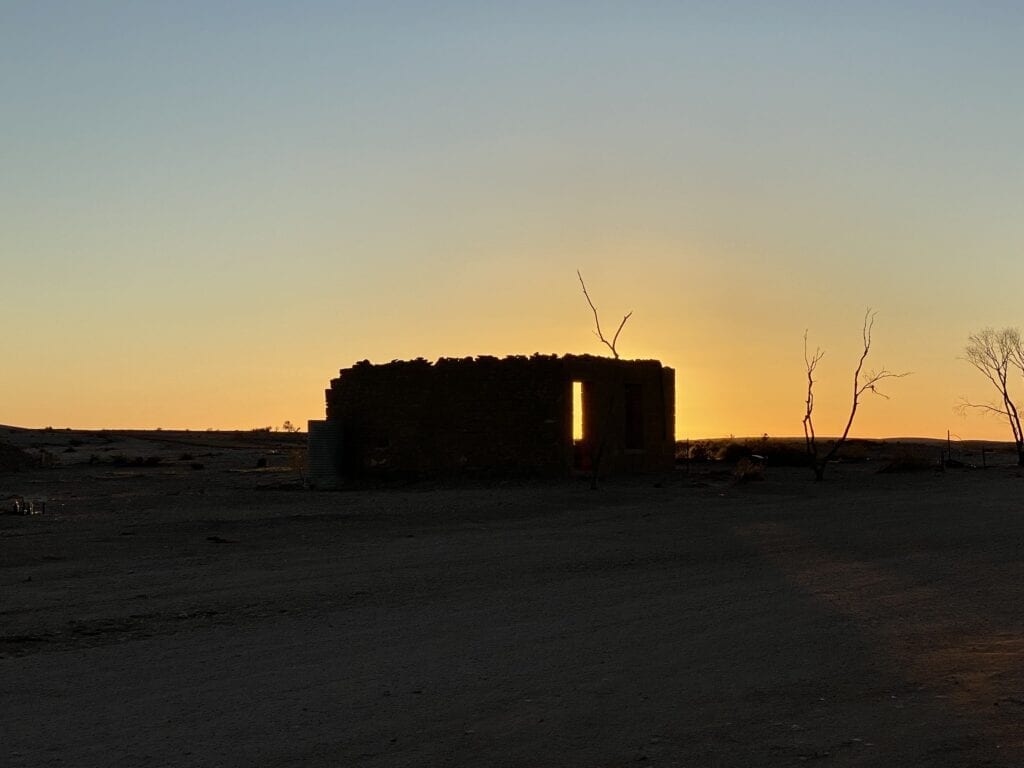
It’s difficult to imagine this being an operational town now because there’s not a great deal left. But it’s not as difficult as you might expect…
This is where a dedicated band of volunteers come into the picture… ably led by local lady and devoted Milparinka advocate, Ruth Sandow.
A Volunteer Army
In the 1980’s, the few remaining buildings were crumbling away. The bank, post office, courthouse and police barracks were deteriorating rapidly.
Some locals banded together and decided to restore the courthouse. This was the start of something much bigger… the Courthouse, Police Barracks, Police Cells and the Kitchen (now used as a cottage for volunteer accommodation) have been fully restored.
These sandstone buildings are fine examples of the skills of the talented stonemasons who built them.
Just about everything you see in the Heritage Precinct has been built or restored by a large army of volunteers, some locals and others from all parts of Australia.
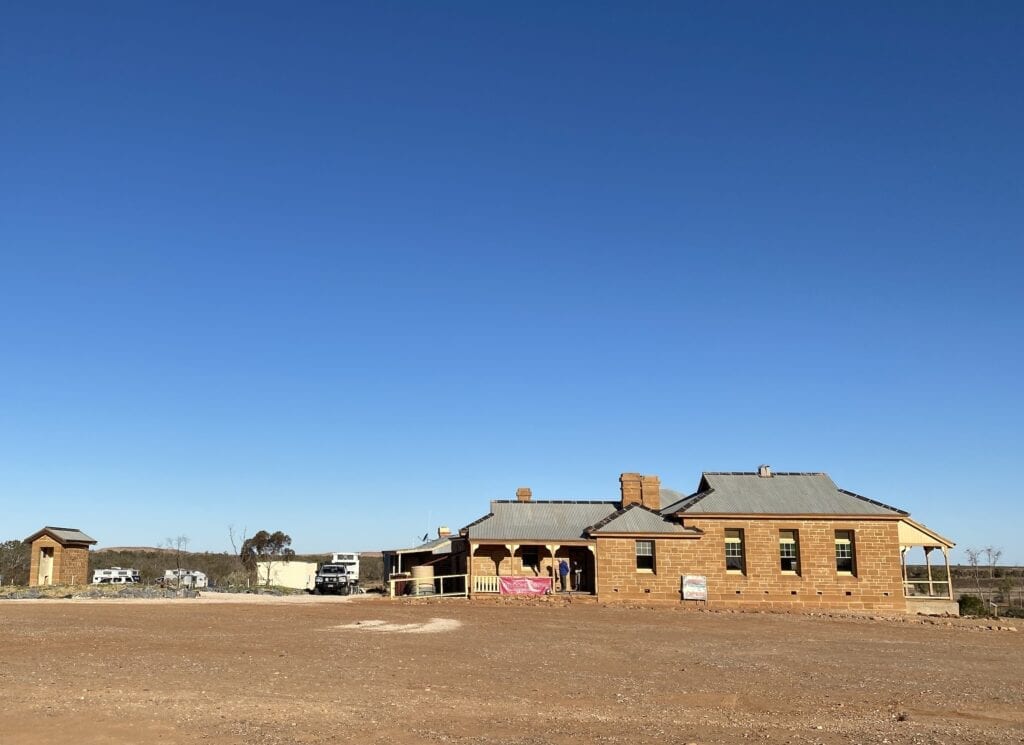
The entire Heritage Precinct is now under the umbrella of the Milparinka Heritage and Tourism Association. Ruth Sandow and a small band of devoted locals manage the association, seeking government funding for upgrades, organising maintenance, managing the volunteers and a whole lot more.
We volunteered to help rearrange and tidy up some displays within the Heritage Precinct under Ruth’s direction, as well as a few other jobs that needed doing.
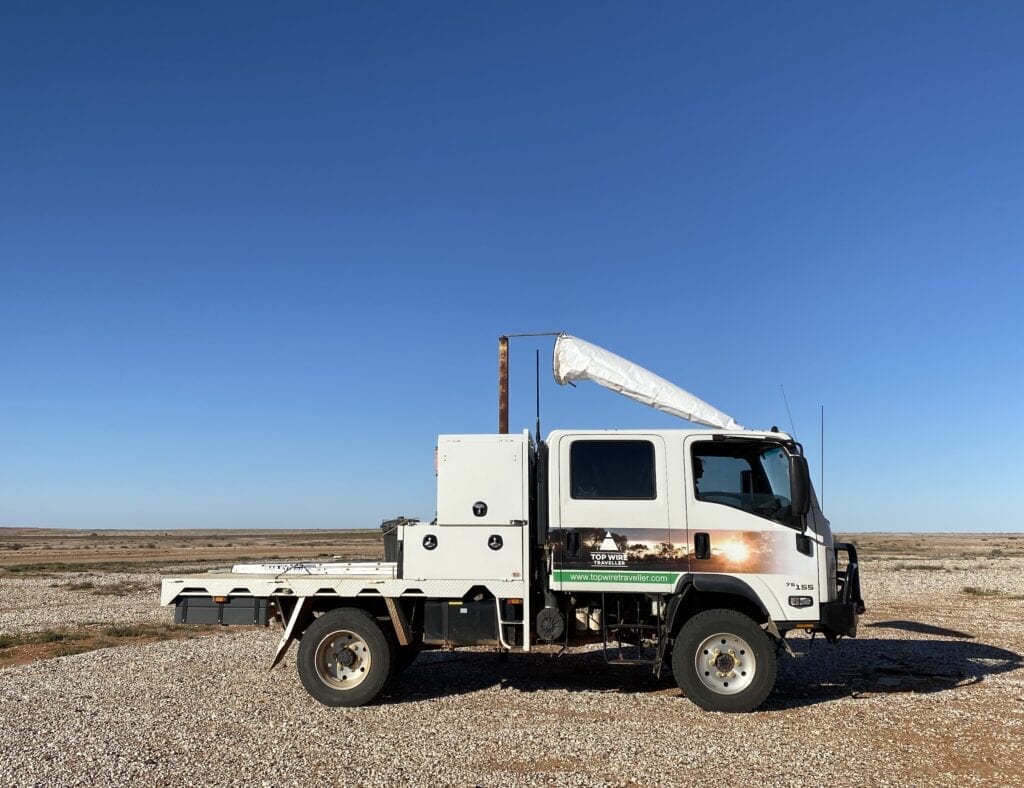
While we were there, Jeff and Colleen from Sydney were volunteering in the Visitor Centre for 2 weeks. They provided information to travellers, looked after the campground and generally kept us entertained!
Volunteers like Jeff and Colleen continually rotate through during the tourist season. They provide an important service to travellers. By having a continual roster of volunteers, the Heritage Precinct remains open and functioning.
Something for Everyone
And while the sandstone buildings catch your eye, take the time to look around. You’ll find plenty of things to keep you busy:
- Re-live the past in the two corrugated iron sheds that house pastoral and mining relics.
- Learn all about the insanely difficult conditions the miners endured in the fantastic new state of the art Albert Goldfields Heritage Mining Centre.
- Take a heritage walk of the old town and get some sensational outback sunset photos.
- Take a travel break at campground or stay at the pub. Either way, make sure you have a feed at the pub!
- Wander down to Evelyn Creek, across the restored and rehabilitated earth slope leading down to the creek.
- Visit the cemetery for a glimpse into how fragile and uncertain life was, back in the gold mining days.
When you drive in and look around, it’s hard to believe most of the improvements have been done by volunteer labour.
Inside the buildings, you’ll discover an incredible amount of information and historical items from the region’s mining and pastoral history.

Family history folders covering local families, hand shears, bullock yolks, steam-driven bore pumps, historical documents from the courthouse… and everything in between.
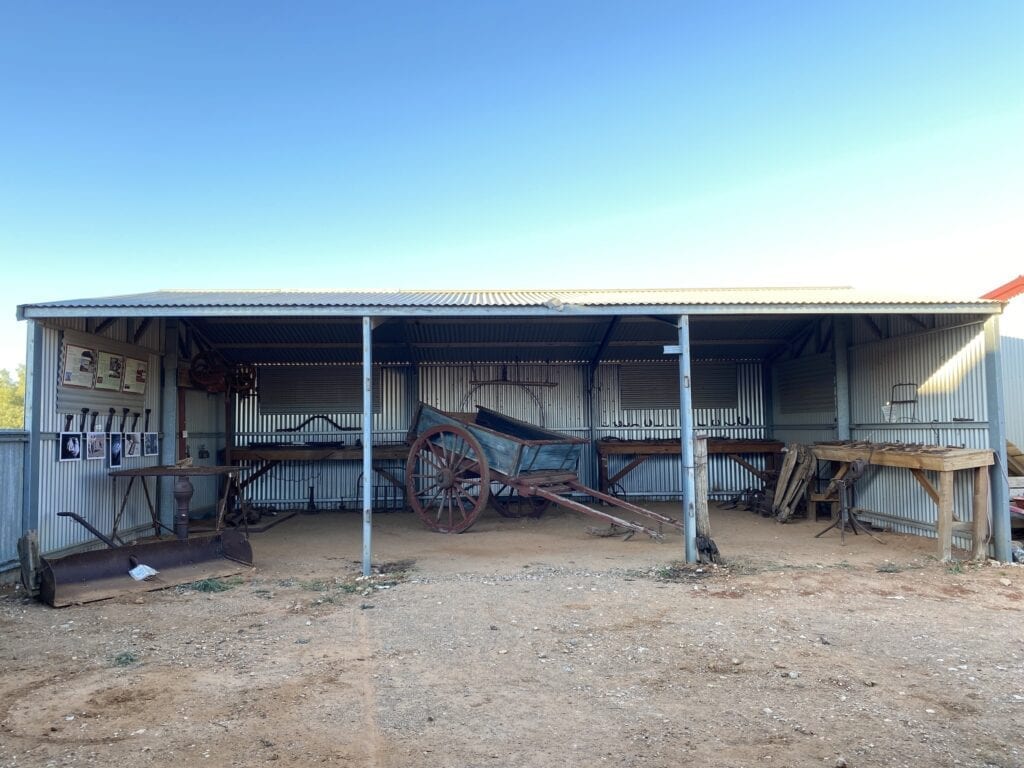
Hundreds of posters covering everything from The Great Artesian Basin to historical facts about the region line the walls of the buildings.
The Heritage Centre holds a wealth of information. It’s a credit to the local people who had a vision and brought it to life.
There’s one other attraction at Milparinka which is a work of art…
Sturt and His Horse Sculpture
Charles Sturt and his exploration party’s exploits at Depot Glen are an important part of this region’s history. During their desperate battle for survival at Depot Glen (see below), Sturt ventured far and wide. He was searching for another waterhole… a means of escape.
Sturt also explored the region extensively as part of his mission, sometimes alone, sometimes with one or two companions.
But he always had his trusty horse. The two of them covered hundreds of kilometres together, exploring his forbidding country.
As part of the Sturt’s Steps tourism route, the project commissioned Brian Campbell to create a wire sculpture of Sturt and his horse. Brian Campbell created the fantastic western barred bandicoot (or Big Bandicoot) for the Wild Deserts project near Cameron Corner, which was funded by the Sturt’s Steps project.
The sculpture sits on the entry road to Milparinka, when you come in off the Silver City Highway. It’s difficult to miss, standing out among the gibbers.
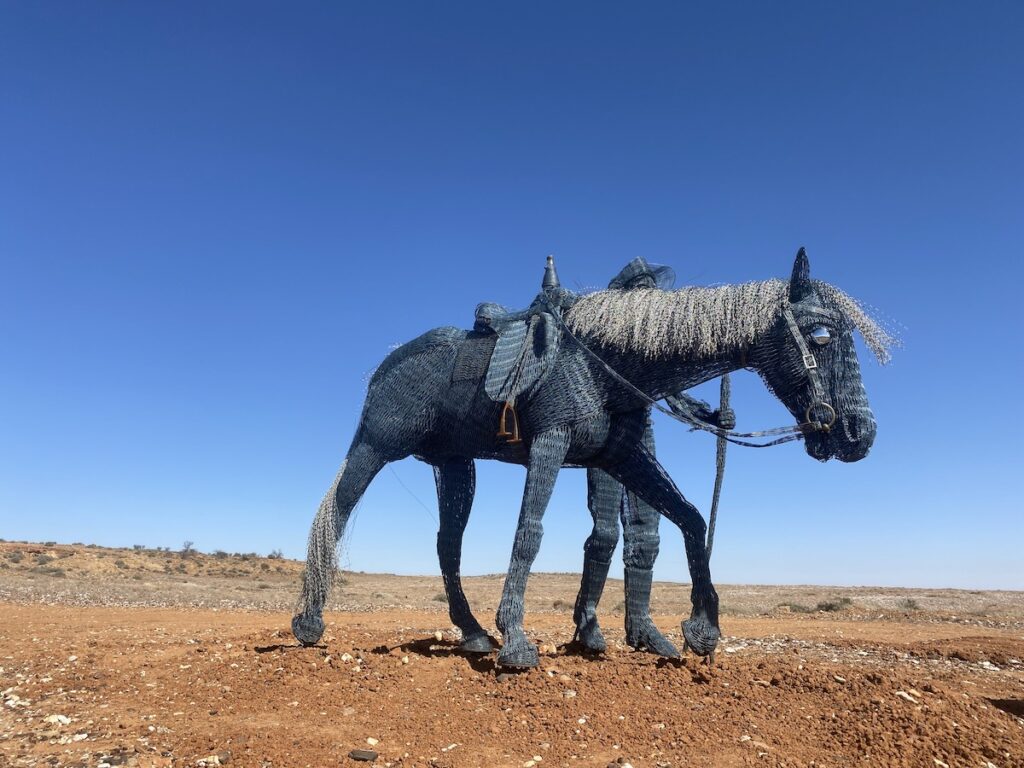
This incredibly detailed wire sculpture is truly a work of art. Layer upon layer of wire netting is shaped and formed and stretched to create every detail. As you can see below, the detail is incredible. He even has sideburns!
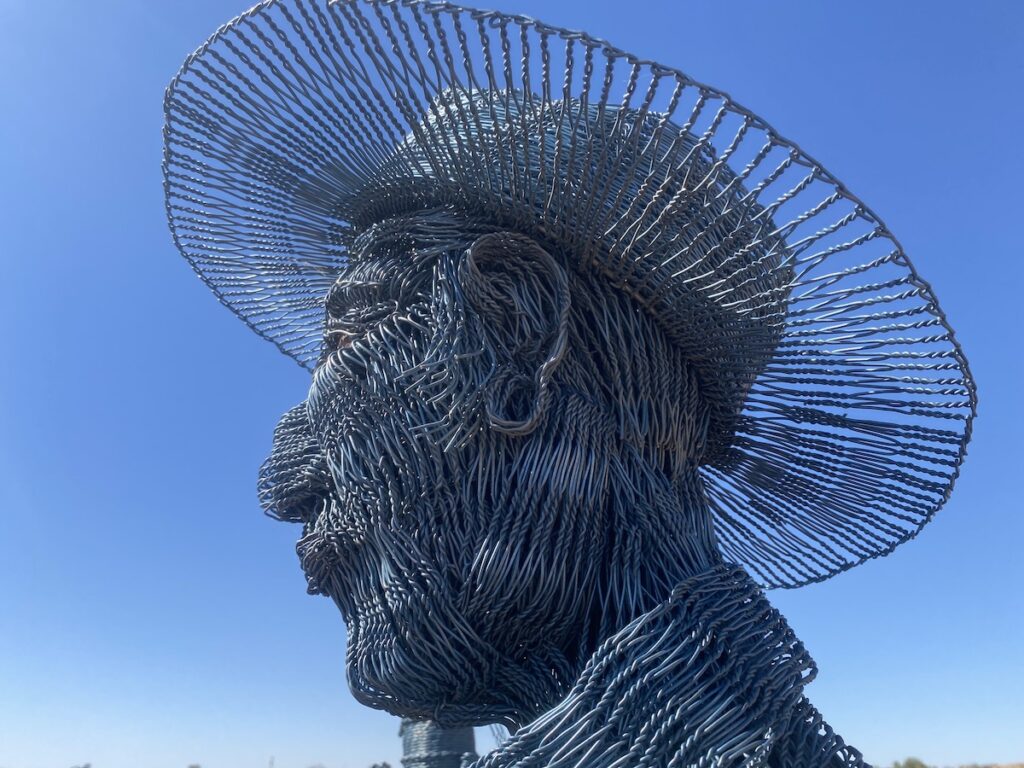
Get out, walk around and have a close look at this sculpture. It’s quite amazing. Of all the attractions at Milparinka, this one tops our list of favourites.
Other Attractions
Use Milparinka as a base to explore the local region. Here’s a few ideas.
Depot Glen
No trip to Milparinka is complete without a visit to Depot Glen. Walk along the creek and get a feel for how desperate Sturt’s party must have felt… thousands of kilometres from home, with no escape in any direction.
We’ve been here when the waterholes are full, and also when they’re dry. The contrast is frightening.
If you visit after rain, it’s easy to imagine living beside these waterholes for 6 months. However, in dry times these long waterholes turn into stagnant muddy holes.
And that’s what Sturt’s party had to contend with. How only one person died (Poole of scurvy) is a miracle.
Further down the creek is Poole’s grave. Surprisingly, the blaze in a nearby grevillea tree is still clearly visible after more than 175 years.
National Parks have a sign which incorrectly identifies the site of Poole’s grave as Depot Glen. It was in fact about a kilometre further upstream.
If you’d like to learn more about Sturt’s inland expedition, I highly recommend “Sturt’s Desert Drama” by Ivan Rudolph. It’s a fascinating read.
- For Paperback version ➜ click here.
- For Kindle version ➜ click here.
- For Apple iBooks version ➜ click here.
Mount Poole and Sturt’s Cairn
If you’re feeling energetic, drive past Depot Glen to Mount Poole.
You’re on private property, so follow the signage, stay on the track, leave all gates as you found them and don’t go exploring along other farm tracks.
The walk from the carpark to the Sturt’s Cairn on top of Mount Poole is reasonably challenging. And don’t even attempt it in summer. You’ll be slow-cooked through in no time!
This rough, rocky climb has a few false peaks. However, it’s well worth the effort. The 360° view from the cairn is sensational.
The cairn itself was built to keep Sturt’s men busy during their stay at Depot Glen. When you stand at the cairn and see how far they had to walk just to get here, you have to wonder why they bothered.
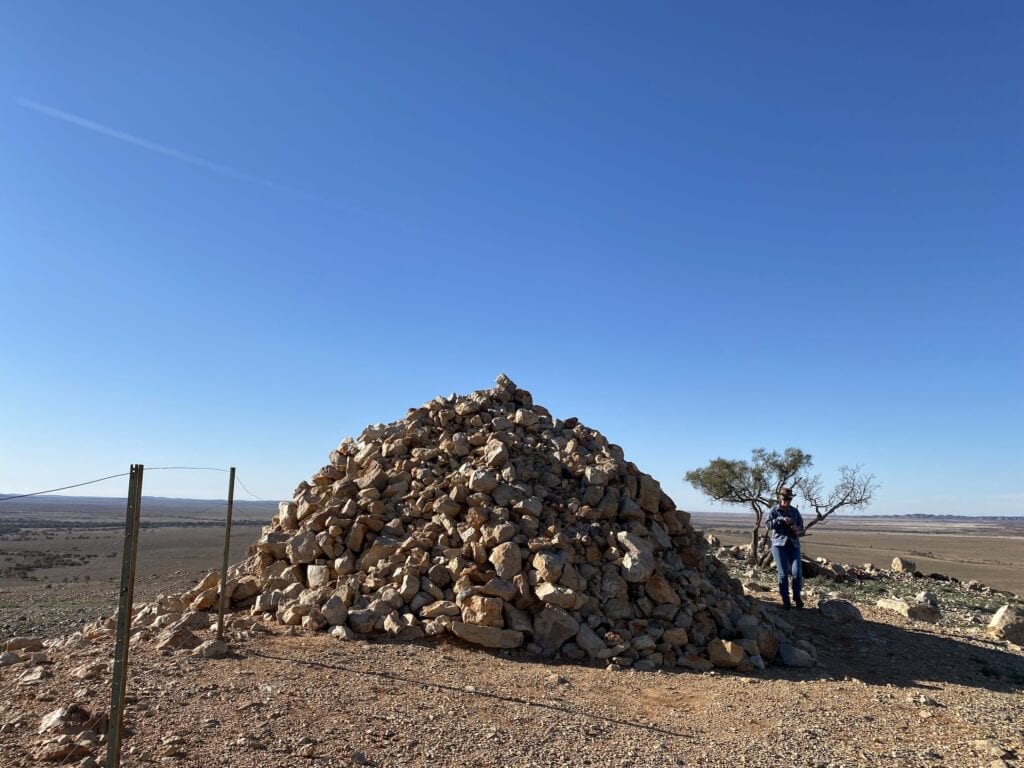
It’s not an easy walk from Depot Glen to the top of Mount Poole… 6 or 7km over rough, rocky ground. And even harder when you’re starving and the temperature’s in the mid-40’s.
Then they carried rocks all day to build the cairn, only to walk all the way back to Depot Glen at day’s end. Crazy!
Tibooburra, Fort Grey, Cameron Corner & Sturt National Park
Milparinka’s a great base to explore further north. Tibooburra’s only 42km up the Silver City Highway, on a good tar road. Have a look around the town, it’s an interesting place.
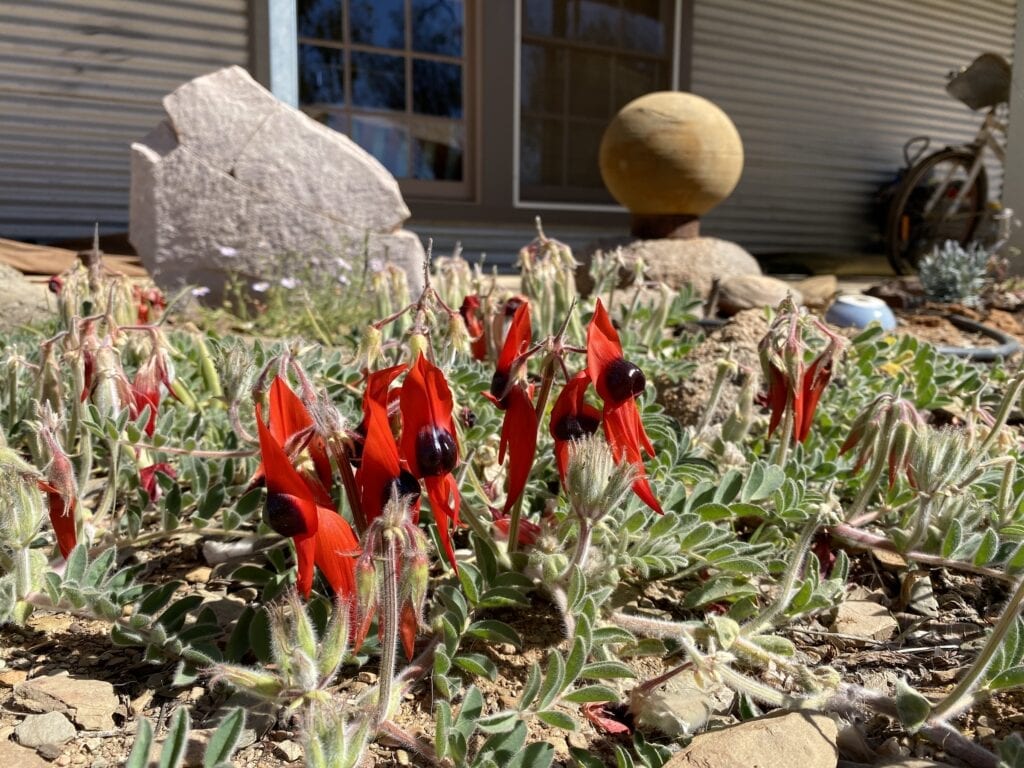
You can take some fascinating drives through Sturt National Park. Our favourite is the Jump Up Loop Road which starts north of Tibooburra, off the Warri Gate Road. This is best tackled in a 4WD, or at least a well-equipped vehicle with high clearance.
Continue onto old Olive Downs Station and turn onto Middle Road. Turn right at the Tibooburra to Cameron Corner Road and drive out to Cameron Corner, where the three states meet.
On the way back, call into Fort Grey Campground. Here, you can take a walk across Lake Pinaroo to where Sturt’s party camped at Fort Grey.
Only attempt this walk in the cooler months. Summer temperatures out here get well above 45°C, so you need to be careful.
Then heading back towards Tibooburra, take Waka (pronounced Wokka) Road south down to Hawker Gate Road and back into Milparinka from the west. Waka Road forms part of the Sturt’s Steps Touring Route. More on this another time.
A Connection To The Past
There really is something for everyone at Milparinka. Spend some time visiting the Heritage Precinct, then use Milparinka as a base to explore the local area.
Milparinka has had somewhat of a revival over the past decade, thanks to a dedicated band of locals.
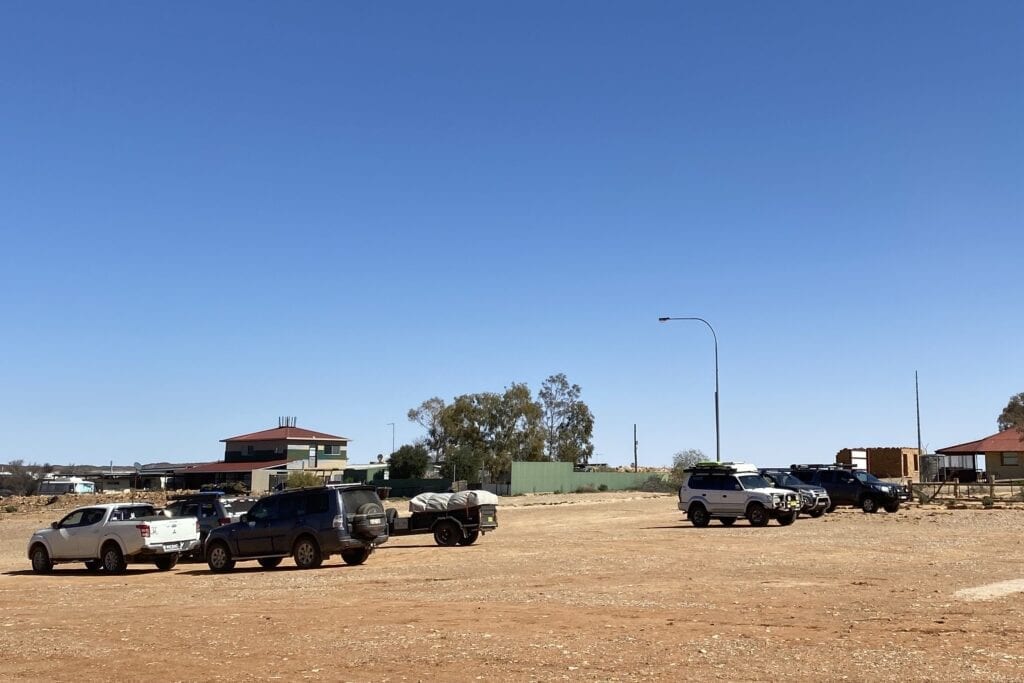
The township is a connection with the past… an ideal way to understand the hardships faced by the people who lived and worked here.
And with the Silver City Highway now sealed all the way from Broken Hill to Tibooburra, Milparinka’s easy to get to.
It’s the perfect way to experience a bit of outback Australia!
Milparinka is on Wangkumara and Malyaangapa country.
Looking for more NSW Corner Country destinations? Then go here.

Get your Traveller’s Guides
… and a whole lot more at our FREE RESOURCES Page!
Any questions or comments? Go to the Comments below or join us on Pinterest, Facebook or YouTube.
Any errors or omissions are mine alone.

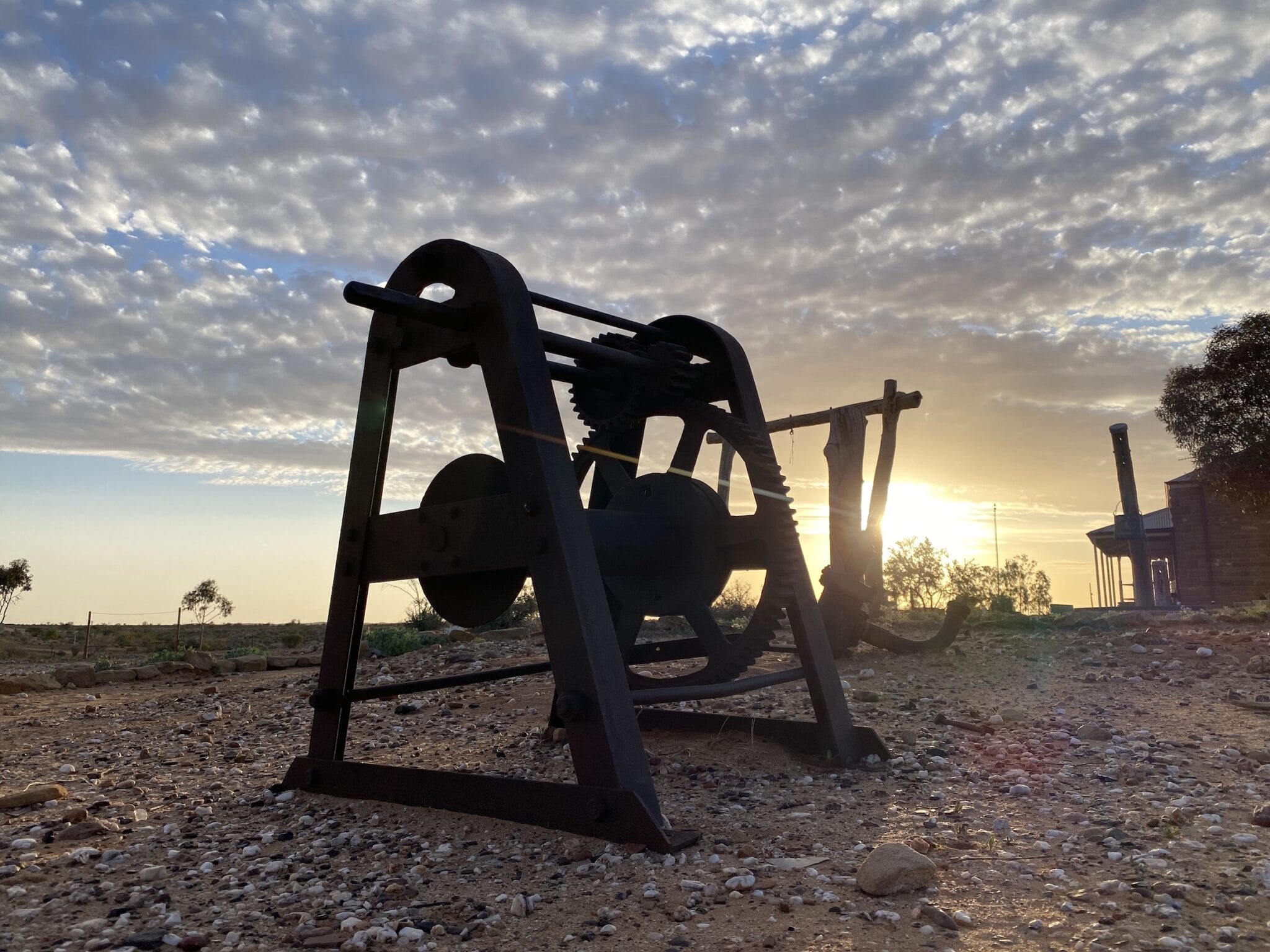
thanks for a superb article.
Visited that area in 2015, much enjoyed, must return
Thanks Pete! Cheers, Andrew
Thankyou for a wonderful insight into the history of Milparinka. I visited there in 2022 .I was fulfilling a promise to my late grandmother, Lillian Midwinter, who was born there in 1897. I discovered much about family history and felt a great connection there as I walked in their footprints. Thanks to the brilliant volunteers for making this a truly memorable visit.
Hi Rowena,
It sounds like Milparinka has a special connection for you. It’s difficult to imagine life there in 1897 – it would have been a struggle. The volunteers and the tireless work of a small group of people behind scenes, help bring Milparinka back to life. Cheers, Andrew